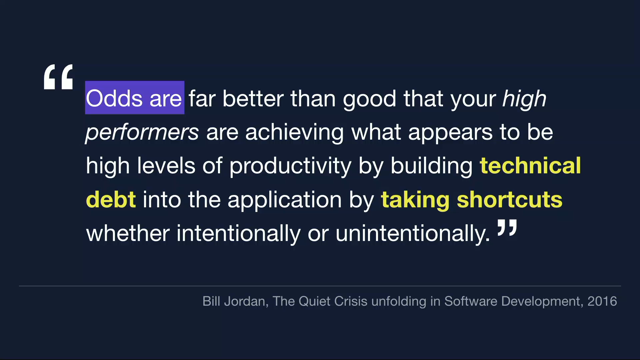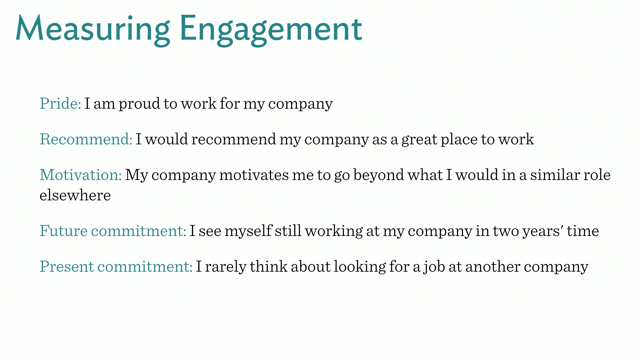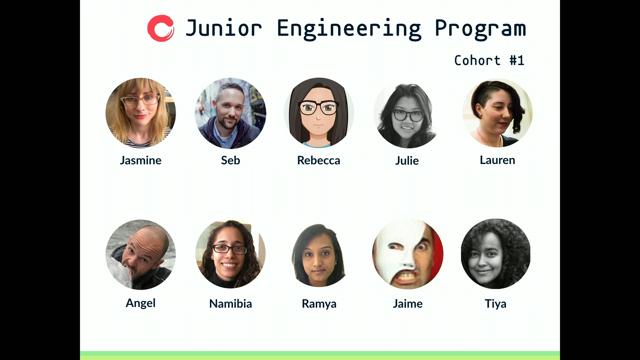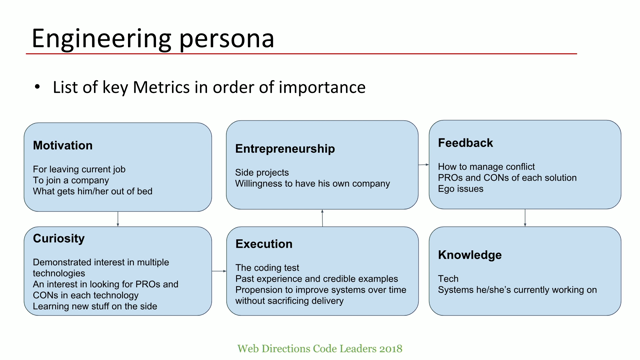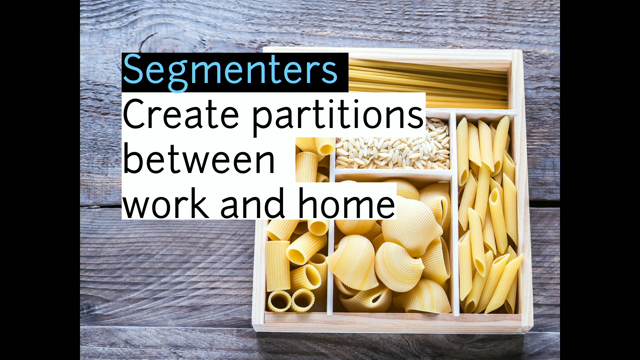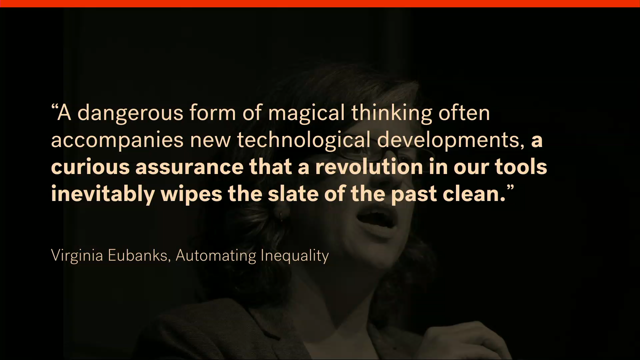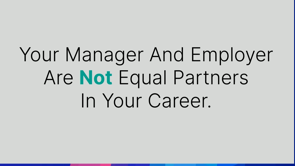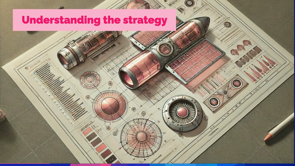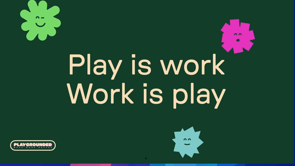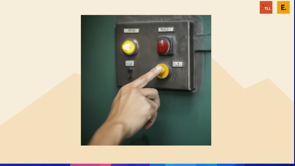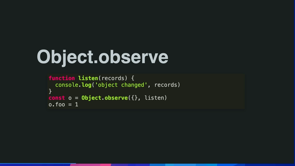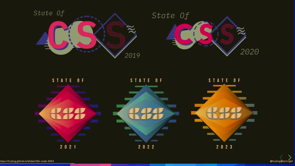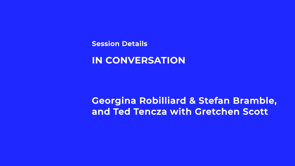Navigating Technological Pivots: A Guide to Team Buy-In and Sustained Motivation
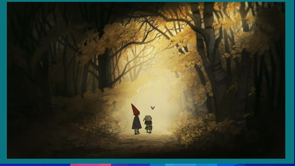
Introduction - From Buy-in to Commitment
Inga Pflaumer explains why she shifted the focus of her talk from buy-in and motivation to commitment, highlighting its importance in navigating pivots within startups, particularly within her role managing the rollups team at Immutable.
The Forest Analogy - Setting the Stage
Inga introduces the animated series "Over the Garden Wall" as an analogy for navigating pivots. Two brothers lost in a dark forest represent a team facing challenges, needing trust, agency, and commitment to find their way home.
Pivot 1: The Forest Fire - Externally Driven Change, No Clear Direction
The first pivot analogy involves a forest fire, representing an unforeseen external change. Inga discusses the team dynamic in such situations, where commitment and trust are challenged but agency remains. The importance of transparency and communication is highlighted.
Pivot 2: The Creepy House - Internally Driven Change
The second pivot analogy features a creepy house, representing an internally driven change where the team recognizes the need to alter course. This scenario contrasts with the first, as trust remains intact and the team collaboratively decides on the pivot, leading to a more positive experience.
Pivot 3: The Monster - Externally Driven Change, Predefined Solution
The third pivot analogy involves a monster, representing a forced, externally driven change with a predefined solution. This type of pivot is described as the most challenging, as it negatively impacts trust, agency, and commitment, leaving the team feeling disempowered.
Beware of Fires - The Key Takeaway
Inga emphasizes the importance of early identification of the need for a pivot and discusses the three types of pivots experienced by her team. She highlights the importance of understanding the source and nature of the pivot to navigate it effectively.
Internally Driven Pivots - A Good Dish, But Hard on Managers
Inga further explores internally driven pivots, acknowledging their benefits for team morale and commitment but also the challenges they present for managers in communicating changes to stakeholders.
Externally Driven Pivots (Internal Solution) - Focusing on Trust and Commitment
Inga discusses externally driven pivots where the team still has agency in choosing the solution. She highlights the importance of addressing the impact on trust and commitment, emphasizing empathy, acknowledging emotions, and presenting the pivot as a growth opportunity.
Bad Pivots - Externally Driven, Predefined Solution
Inga revisits the challenges of "bad pivots," emphasizing the negative impact on commitment and agency. She stresses the importance of acknowledging the problem, allowing time for adjustment, and acting as a mediator between the team and the source of the pivot.
The Us vs. Them Trap - Avoiding a Culture of Distrust
Inga cautions against the "us vs. them" mentality that can arise during challenging pivots. She advocates for mediation and empathy-building between the team and leadership to avoid fostering a culture of distrust.
Focusing on Agency and Empowerment
Inga emphasizes the importance of focusing on the agency that the team *does* have, even in constrained situations. Empowering the team to make decisions, even small ones, can help restore commitment and morale.
Do's and Don'ts of Navigating Pivots
Inga summarizes key do's and don'ts: Don't lie, don't foster an "us vs. them" mentality, and adjust timelines realistically after a pivot.
Inga's Team's Experiences - Real-World Examples
Inga shares her team's experiences with all three types of pivots, highlighting the challenges and lessons learned. She emphasizes the importance of adapting management strategies to the specific team and its culture.
Conclusion - Knowing Your Team and Your Culture
Inga concludes by reiterating the importance of knowing your team and culture when navigating pivots. She encourages leaders to avoid pivots if possible but to be prepared with empathy, understanding, and clear communication when they are unavoidable.
Hi everyone, we just had a day of amazing presentations, lots of learnings, and the bar is set pretty high.
So I'm going to start with a pivot.
You probably noticed that I replaced buy in, and motivation in my talk description with commitment.
Because I think commitment describes the end state a bit better.
I have to say, the reason that I decided to do this talk was a sarcastic remark from one of my favorite colleagues, he knows who he is, and, at one time in our technical journey he said something like, oh, I'm sure they don't pivot in other startups.
And I was like, okay, I need to talk to someone about my experience with pivoting and startups.
And it was either my psychotherapist or Web Directions.
You won.
I manage rollups team at Immutable.
For some reason we use Uncle Toby's rollups as our team logo.
They did not pay me for this promotion.
And you can think of it as a place that when the play consultants come in and say, let's all stand up and imagine which one L2 blockchain you are, this game will be very popular.
So we do a lot of very interesting technological stuff.
We do a lot of greenfield work.
We do a lot of proof of concepts.
We have a lot of changes of direction and pivots.
We have pivots.
While I was preparing for this presentation, I thought a lot about the format and the message, and I decided to start with a story.
This story will be relevant at some point.
Have you ever watched Over the Garden Wall?
It is an animation series, I think it's on Netflix, and it's absolutely amazing.
It is a story about two brothers traveling through a very dark forest.
They're walking through a dark forest, it's getting darker and colder, but they are committed, this is relevant, to finding their way home.
For a second, let's talk about our brothers.
Since they're the main heroes of our story, we need to know a bit about them.
We don't know how and why they got into this forest, I'm not going to spoil the TV series for you, you have to watch it to figure this out.
But what is relevant is to succeed, they need three very important things.
They need trust, they need agency, and they need commitment.
First, they need to trust each other.
The older brother needs to trust that the little brother will follow the direction he gives him and delivers whatever is expected.
The younger brother needs to trust the older brother, and, trust his leadership and trust the directions that he gives.
They need agency, which means they need to be able to make decisions on their own and then deal with the consequences of those decisions.
And they both need to be committed to finding their way out of the forest.
Those three things are connected because they need trust and agency to get commitment.
Now back to the story.
They walk through a dark forest and suddenly there is a fire.
They have to do something.
Maybe they have to pivot.
Side note, I didn't use any AI image, AI generated images for this.
It was a bold choice, but I'm sticking with it.
So the forest fire is an unforeseen change.
It is something that happened externally.
We are going to exclude the possibility of them starting this fire.
And they don't know what to do.
There is no explicit direction for them to follow.
But they have options.
They can turn back, they can walk around, they can maybe even try to put down this fire.
Let's look at their dynamic in case of a pivot that was driven by some external factors, but there is no explicit direction for our heroes to follow.
They still have commitment, since their goal , walking out of the forest did not change that much.
But their previous plan is out of the window, so there will be a bit of a turbulent time while they figure out their new plan.
They have agency, because all the options are available for them.
As I mentioned before, they can walk around, they can try to put down the fire.
Etc.
The trust here is an interesting thing.
I want to spend a bit of time on it.
Because the older brother is taller, the reasonable expectation would be for him to see the fire before the little brother.
But maybe our older brother signed an NDA?
Or it was a commercial deal that was not confirmed yet.
Or he was just not ready to say, by the way, this direction we're going, it ends in a fire.
In the case of unforeseen change, driven by external factors with no explicit direction coming from the outside, trust and commitment will take a hit.
But as long as there is agency for our team to make their own decisions, they will be fine.
So our brothers decided to change the direction.
They continue walking through the forest.
The road gets darker and harder.
They're not super confident in the direction that they chose.
And suddenly they see a house.
Initially I thought it is a nice house, but now it looks a bit creepy.
But that's fine.
So they can pivot and go to this house.
This change is different from the first one, because this time our travelers noticed that the road got harder, it got darker, and they had a discussion about the pathways that they can take.
They can continue their dark road, or they can go and check the house.
It's up to them.
So this is a different case of a pivot, because it is driven internally.
Internally.
Internally driven pivots change the dynamic of the team.
So the trust is there.
It was not affected because it was a decision that they are going to make collaboratively.
They're going to decide what to do.
Commitment is there.
Yes, it is a bit of a turbulent time because they need to figure out what to do.
But at the end of the day, the agency is also there.
Because they can do whatever they decide to do.
Go to the house, stay in the forest, etc.
Overall, it is not a bad pivot.
To some extent, we can call it exciting.
We will talk about an unhappy face of an older brother a bit later.
But overall, it is not bad.
Unlike the next part of our journey, we are back in the forest.
Our heroes are walking through the forest and it is dark and full of horrors.
Suddenly, there is a huge monster.
It blocks their way.
It scares the hell out of them.
They need to pivot.
There isn't much thinking.
What you can think when you see a monster.
I love this monster, by the way.
The only thing they can do is run and they cannot even tell if the direction that they're running gets them out of the forest.
They have to run.
There is no choice.
This is a very different pivot because it was pushed on our team of brothers and now they're sad and unhappy because all the three qualities they need to succeed will suffer.
Trust suffers here because the older brother is still taller, and the monster is not a thing that you would miss.
There is no agency, because all they can do is run.
And they have no idea if they're running in the right direction.
None of their previous commitments apply.
Maybe they don't even want to commit, because it was not a choice that they made, it was something that was pushed on them.
In case monster analogy was not clear, those pivots are bad.
Changes that come out of nowhere, when your team gets pushed in a specific direction, are very hard to navigate.
Now, you probably want me to get to the point.
And the point is, Beware of fires.
I spoke about three cases of pivots, and my team actually experienced all of them.
And here are my observations.
With pivots, the sooner you identify the need for one, the better.
In our story, there was an example of a pivot identified internally.
But it is not always possible, because there is your team, there is the company, there is the industry, sometimes there even the government, and all of those things can be sources of pivots.
Internally driven pivots are a good dish.
For example, maybe the team was integrating an immature external product, and they learned that it is not actually up to the standard, so they need to change.
They're empowered to pivot and find a different product.
From the team morale and commitment point of view, those pivots are easier, because your team trust is there, we talked about this, and the commitment is there, but those pivots are a bit harder on you, because now you have to go and explain to stakeholders why the roadmap that you had before is not applicable anymore, and you need another three months to deliver pretty much the same software.
That's why the manager, older brother face was a bit sad on this slide.
I promised you that I will explain why.
And the explanation is easy.
Stakeholders.
But with a new commitment from the team, you can just ride the way.
If your team had predicted the pivot, went through a turbulence period to make a decision and figure out what is possible to deliver, and then went to implementation, This pivot will be a positive in the long run.
It will improve the trust that your team has because it was a collaborative decision.
And it will improve agency because we needed to do it and we made it together as a team.
After a turbulent period, commitment will also be there because again, they were empowered to find their own solution.
And they own it from now on.
When the need for pivot comes from the external sources, for example, you have to change the stack, but the solution still comes internally, for example, your team can't pick up which stack to change to, it is a bit better.
And in situations like that, first you need to focus on trust, then on commitment.
Why?
Note that in this diagram we don't have a prediction, instead the need for pivot is announced.
And immediately trust and commitment go down.
We talked about why commitment goes down in turbulent times, because the team really needs to figure out what to do before they commit to a new solution.
But what is with trust?
In some teams you have a trust credit.
When you work together for a while, you speak the same language.
And when you tell your team, we need to pivot, they listen to you.
But sometimes people come from different backgrounds or they have bad experiences and they will wonder about the reasons given to them and they might not trust the reasons given to them.
Accept that this is a problem.
A pivot will be a problem for your team and it affects the team.
Acknowledge the feelings.
It is easy to empathize with your team in case of a pivot that's that comes from outside.
Because turning off the robot you knew and we're ready to follow back into the dark forest is scary.
Looking for another path forward is hard.
And people need time to deal with emotions.
They also need time to figure out what to do next to explore the opportunity.
But this exploration of opportunity, this turbulent time to figure out what are they going to deliver now and how they're going to do this means growth.
Like with stages of grief, the acknowledgement and time will help you to get a bit of trust.
The agency will stay the same or even grow.
Because again, it was hard.
But we made it.
And the commitment from finding a solution independently will result in a better buy in the long run.
Because they made the decision, they own the decision.
You acknowledge the problem, you give people time, and then you present it as a growth opportunity.
Allow your team to explore, learn, and commit.
They did not get the chance to decide to pivot, this was external, but they still decided what to pivot to or what technology to use.
You also learned your lesson about external pivots and now can pretend that you will identify them sooner.
You probably won't.
Now let's look into bad pivots.
They are the hardest one that me and my team had to go through because they were not just driven externally.
Something happened and we had to pivot.
They also came with a predefined solution.
A strange example, but a good example, would be, Oh, we had this written in React from tomorrow everyone just starts using Angular.
Or, we've worked on this game for a while.
It is an amazing quest.
Let's just make it a slasher from tomorrow.
Note, there is no prediction or decision anymore.
There is just announcement and solution.
The commitments are out of the window.
Timelines are out of the window.
Emotions are running high.
And the interesting thing is that you cannot really sell it as an opportunity for growth.
Because it is not an opportunity.
It is a directive.
Switch from this to this from this date, and you have to follow it.
Just like with the previous point, we acknowledge the problem and we give people time, but it will require a lot more effort.
Because now it's not just, we cannot travel the road that we wanted.
It is we are not even trusted to find our own road.
We have to follow the road that someone else pushes us to.
Acknowledgement will help you with trust a bit, and maybe a bit with a commitment, but not much with anything else.
There is another thing that I want to mention here, and I think it was mentioned in one of the previous talks.
When the trust goes down, especially in a situation of the external pivot with the predefined solution, it is very easy to do this us against them thing.
When you identify with your team, and you say, oh, they don't know what they're doing, they're pushing us in this direction, I'm also unhappy.
This seems like an easy way to win this bit of trust back.
But even though it is an easy thing, it is a wrong thing.
Because gaining a bit of trust at the expense of the venue making decisions will come back to you.
Because at the end of the day, you will still have to work with the same leadership, with the same team.
And if they don't trust the directions given to them anymore, you will have to spend a lot of time to fix it.
Even though in this immediate moment, you win a bit of trust back.
Instead, your goal as a leader is to become a mediator.
The first solutions always have some reasoning behind them, and it is your job as a leader to find those reasons and propagate them to the team in the appropriate form, acting as a mediator.
It will not be easy, but it will help you to grow empathy between your team and the leadership or the business or the partner, or, if you have to, the government, whatever was the source of the pivot.
Mediation will help you stop bleeding in commitment and agency.
It won't fix it immediately, but it will be helpful in the long run.
Because learning, it is not always just the hard skills, new patterns, or cool frameworks.
Learning can be business processes, product strategies, or Empathy.
And through empathy, you get back to the commitment.
We acknowledge that this is painful.
We give people time.
We give people explanation and mediate the situation to the best of our ability.
And we help people to support each other.
We focus on the agency that we have instead of the agency that we want to have.
Yes, maybe you cannot decide on a stack, but you can still decide what are the best practices that you're going to use from now on.
Or maybe you cannot even decide on the best practices, but you can still decide on the ways of working.
Give to your team something that will help them to feel the agency.
Give them something that will empower them to continue on this journey.
And hopefully over time, while building your top down solutions, your metrics will go up, and, you have more stories to share in the future.
We talked about our do's, and we mentioned a couple of our don'ts.
Let's, summarize them.
Don't lie.
Being a leader, sometimes you have access to the information that you cannot share.
And, if you had access to this information but you couldn't share it, be honest about it.
Otherwise, one day, when your team hears, three months ago when we decided on a pivot, while you pretend that you were informed about it one month ago with everyone else, you're going to have a lot of problems because you literally lied to them.
Don't become friends against somebody.
Friendship built on common dislike of someone are not healthy in the long run.
You don't want to build a culture on distrust or dislike.
And the last one, maybe obvious, but please change your timelines after pivot.
You will not be able to deliver the same product on a new stack in three weeks.
Doesn't matter how badly you want it.
As I mentioned, in the last 18 months, my team went through all three pivots.
This is an illustration of how it felt like.
My hair not being gray is a testament to beauty industry, but my team sticking together.
Through all of this is a testament to them.
Our first pivot was externally driven with a predefined solution and resulted in a complete stack change.
It was very hard to keep everyone focused on a goal.
But with a bit of mediation, with little things that we had control over, things that we could change to the better, we got through it and we found a way to move forward.
And now we have horror stories.
Our second pivot was the internally driven one, and comparing to the first one, it was a vacation.
We tried the technology, it didn't work, we switched to the technology, I had to go to the leadership and explain to them why we're now delaying this release for three months, because we're actually redoing it completely.
But this is my job.
Luckily, by the third pivot, we had so much fun that we really enjoyed it.
I hope it conveys enjoyment and a bit of craziness.
At least that's how I see it.
So yeah, we managed our third pivot, and I don't think it will be the last one.
But learning, that's what we're here for.
Overall, if you can avoid pivots, avoid them.
Getting back to the forest analogy.
Get the map.
Check your time and stay on the path.
But it is not always possible.
And as a manager, you know your team.
You know what they need.
Because at Immutable, at one point, I had three teams at the same time.
And managing pivots in three of them would be very different because they expected different levels of empathy.
They needed different amounts of time.
And mediation looked very different in those teams.
And because, at the end of the day, how you deal with a crisis is defined by the culture that you have.
And, as a leader and a manager, you should know your culture.
And, if you have to pivot, I hope you watch over the garden wall for the inspiration.
Thank you, and safe travels through the forest!
In the fast-paced world of technology, the only constant is change. Making the right technological choices can make or break a project, but what happens when the initial decisions need to be reconsidered? This talk aims to delve into the challenges and opportunities that engineering teams face when pivoting their technological foundations.
Drawing on real-world experience, including recent significant shifts in our own team’s technology stack, this presentation will provide actionable insights into Identifying the Need to Pivot, Securing Team Buy-In and Maintaining Morale During Transitions.
By the end of this talk, attendees will walk away with a roadmap for successfully navigating technological pivots, ensuring not only project continuity but also team well-being.
